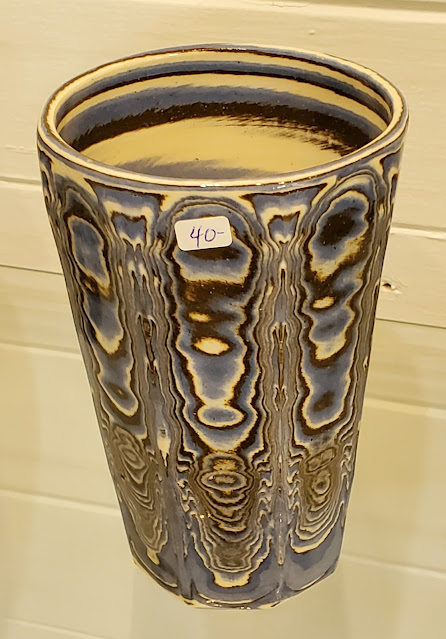MT AIRY, NC. Today is Saturday. On Wednesday we drove to Winston-Salem, two cities that have merged. Winston is known for tobacco processing, with a cigarette brand named after them a few years ago.
Salem is far more interesting, with its old village preserved in Old Salem. It is much like Williamsburg, with reenactors plying trades in old shops with period tools. The best part is that it was founded by Moravians, early Protestant Christians who fled their native Moravia or Bohemia (modern day Czech Republic) to find freedom from religious persecution, especially after the end of the 17th century Thirty Years War. They originally were called Hussites, since they were followers of Jan Hus, who was burned at the stake for teaching the views of John Wycliffe. Wycliffe wrote many works, including a new translation of the Bible into English. This area of North Carolina has streets named after Jan Hus due to his great influence. The Hussites eventually became known as Moravians, named after their place of origin. They also settled in other areas of America, including Pennsylvania, where they still have a strong presence in Nazareth and Bethlehem, where its college and seminary are located. They were instrumental in the conversion of John and Charles Wesley, leading some historians to quip that they were English Moravians, though they strongly parted ways with them later on theological grounds.
Moravian history is closely linked with Count Ludwig von Zinzendorf, a German nobleman of great faith and devotion to Christ, who possessed land in Saxony adjacent to its border with Moravia. He allowed the Moravians to build a settlement on his land, which they named Herrnhut, meaning "The Lord's Watch." From there they tirelessly launched missionary efforts worldwide, including to America.
We began our exploration of Old Salem at the Visitor Center, which has a covered bridge leading to the village. Inside the bridge hangs the Moravian Star (Herrnhuter Stern), a symbol commemorating Advent, Christmas, or Epiphany.
It was much easier and quicker to travel by car, which we did.
 |
| Betty Explores the Covered Bridge |
 |
| Inside the Bridge Hangs the Moravian Star |
For lunch, we visited the only place for a meal in Old Salem, the Muddy Creek Cafe, which was well hidden from view on the main road. We walked a while and found the entrance tucked around behind an old building (see below).
 |
| Entry to Muddy Creek Cafe |
We placed our order at the entrance and went inside to await our food. Betty noticed a couple reenactors inside across the room.
 |
| Betty Approaches Reenactors |
We met the reenactor on the left later in several places of the village. The reenactor on the right works in the pottery shop.
 |
| Two Reenactors |
The college in Old Salem is part of several more buildings of this college in Winston-Salem. It was founded as a college for women, part of the modern thinking of the Moravians. Today the college allows men, but the women to men ratio is 96% to 4%. If I were a Moravian man looking for a college today, this would sound like pretty good odds.
 |
| Salem College |
The Old Salem Moravian Church is still in use today by Moravians.
 |
| Moravian Church Still in Use Today |
When we got there, the church building was locked for the day by 1:30 pm. A dear lady next door at the church office was there alone and could not leave the office to give us a quick tour of the church.
 |
| Church Office on the Left |
We walked around Old Salem, looking at the old building architecture. Seems a lot like Williamsburg. The gardens are experiments to determine what modern plants were likely growing in the 18th century. |
| Sample Buildings with Gardens |
 |
| Garden Examples |
 |
| Betty Explores Garden |
 |
| Period Homes and Gardens |
The most impressive part of Old Salem for us was their ancient cemetery, which continues in use for present day Moravians.
 |
| Cemetery Entrance from Church Road |
 |
| One of Many Arched Entrances/Exits |
One of the key differences between Old Salem and Williamsburg is the constant references to the Scriptures.
 |
| First Archway We Approached |
Very nice to visit a place of graves where survivors placed their loved ones' remains knowingly to await the resurrection.







































.jpg)






















